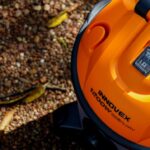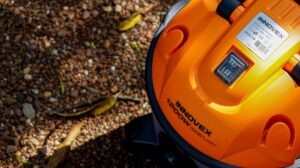
Frequently Asked Questions on Premium Magazine Printing
The print quality of a magazine is a significant factor in the publication’s perceived quality and intended readership. Therefore, choosing the right paper type is integral to your overall project design.
Many types of paper range from lightweight newsprint to thick glossy paper. Ultimately, the choice of paper for your premium magazine printing will depend on its marketing objectives.
What is the distinction between offset printing and digital printing?
Offset printing involves transferring an image and text onto paper using metal plates. Typically, four process colors (cyan, magenta, yellow, and key [black]), commonly referred to as CMYK, are used.
Offset prints also require a custom metal plate for each new print job. It may appear to be a lot of labor, but it allows offset printers to provide their clients with a great level of color control.
The process requires a more extensive setup time than digital printing because of the need to create metal plates. It is essential to note that each plate needs to be made for the specific ink used.
Another big difference is that offset printing is a higher-quality process than digital printing. It is because offset uses specially mixed inks that can more accurately match all the colors. Digital jobs can only use standard inks that are less closely matched.
When it comes to printing your marketing materials, several factors must be considered. It takes a lot of effort to perfect it, from content to layout to design to visuals. So when you’re ready to send your project off to print, one of the first decisions you will need to make is whether to choose digital or offset printing.
Offset printing is a traditional method that has been around for over a century. It uses metal plates (typically aluminum) to transfer an image onto a rubber blanket. It is then rolled onto a sheet of paper or other printed material.
It is much more labor-intensive than digital printing, eliminating all the plates and toner distribution directly to the paper. However, digital printing is an excellent option for shorter on-demand jobs that don’t require large setup periods.
Another critical difference between offset and digital is that offset printing can be more expensive per page if you’re doing a high volume of printing. It is primarily because you’ll need a custom metal plate for each magazine page, which significantly increases the setup cost.
Despite this, offset printing has long been considered the best printing method for magazines and other print products with large page counts. It is because it provides superior image quality and crisp, clean printing.
What is the difference between newsprint and glossy paper?
Newsprint is a paper used for printing newspapers, other publications, and advertising materials. It is an inexpensive, low-cost paper that is strong enough to run through high-speed printing presses.
It is made from a combination of groundwood pulp and other ingredients. The pulp is then diluted and processed on a paper machine. It then undergoes specialized processes, including bleaching, drying, and pressing between rollers.
There are many different types of paper. Each varies in composition, design, purpose, weight, and thickness.
The most common type of paper is matte, a dull, lustreless coating that allows ink to dry quickly and minimizes the chance of smears or smudging. It also has a smooth surface that is easy to clean.
Another famous paper is glossy, a high-shine polymer that can enhance image and text definition in professional projects. Glossy paper is often used in magazine printing, flyers, and other print projects that require a more vibrant appearance.
It is ideal for color laser printing because it employs a cast-coated process that provides maximum visual impact and color image accuracy. It is also compatible with most color laser printers, but be aware that it may bubble or melt in some laser printers. It is also less durable than offset gloss paper.
What is the distinction between uncoated paper and coated paper?
In the manufacturing process, all paper stock is uncoated (like the 20lb bond or 50lb white offset used in your desktop printer – porous to the touch). When the coating is added, it fills in the tiny crevices of this paper stock, giving it a smooth matt, silk, or gloss finish.
A compound coats coated paper to add various qualities, including weight, surface gloss, smoothness, or reduced ink absorbency. It also reduces moisture in the printing process, resulting in better print quality.
Usually, coated paper is denser and thinner than uncoated paper of the same weight. It is because it is less porous and doesn’t soak up as much ink.
If you’re looking to print crisp photos or images on your project, the coated paper will help the images stand out from whitespace, making them appear more vibrant. However, it can be slightly more expensive than uncoated paper, so you must consider your budget and the results you’re after before making your final choice.
Both uncoated and coated papers work well with specialty printing techniques such as embossing/debossing, letterpress, and foil stamping. However, it is essential to note that uncoated paper can be more challenging to fold, and images with excellent detail can sometimes look “muddy.” It may also require additional drying time (good to keep in mind for tight turnaround projects).


















